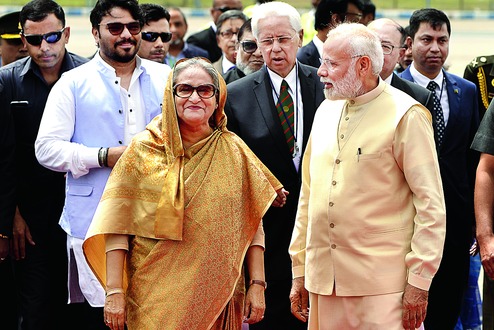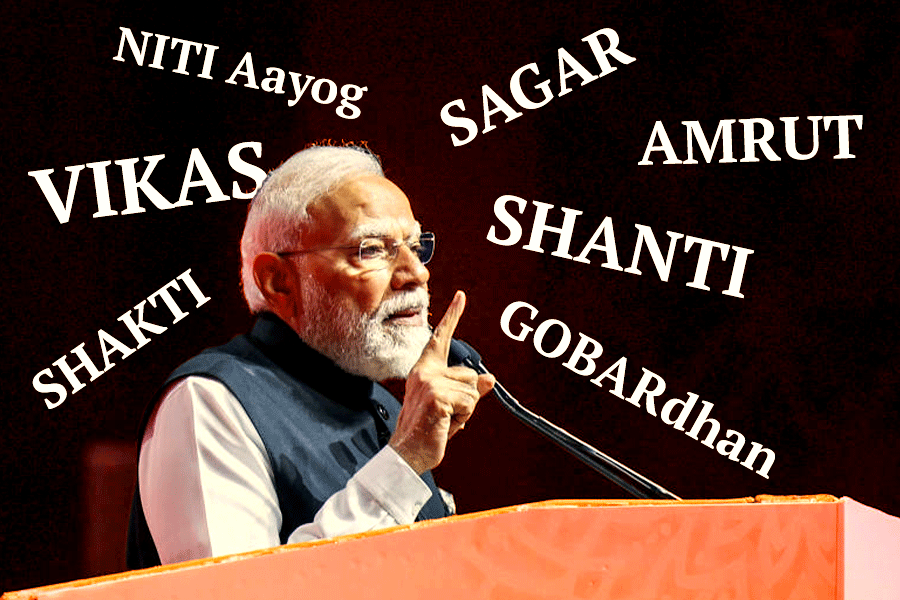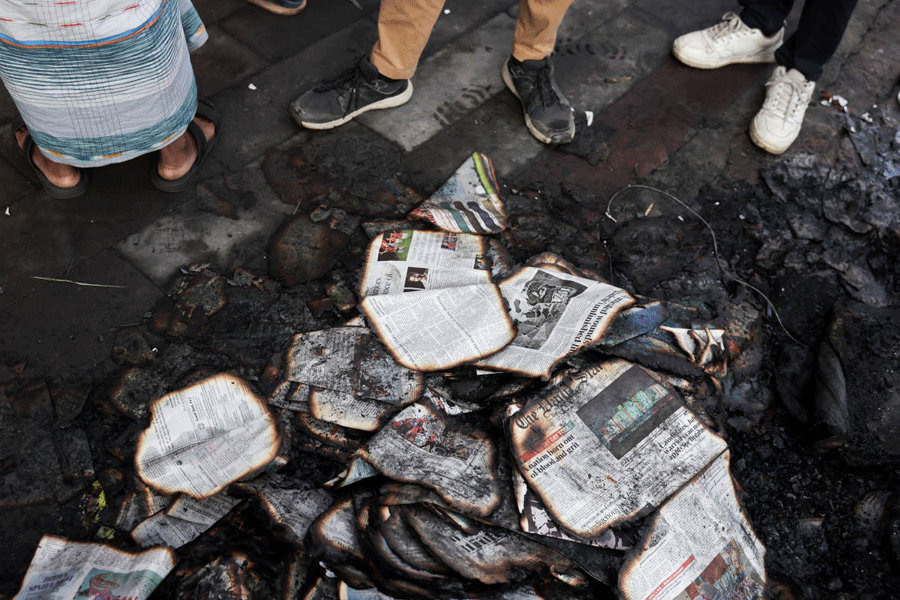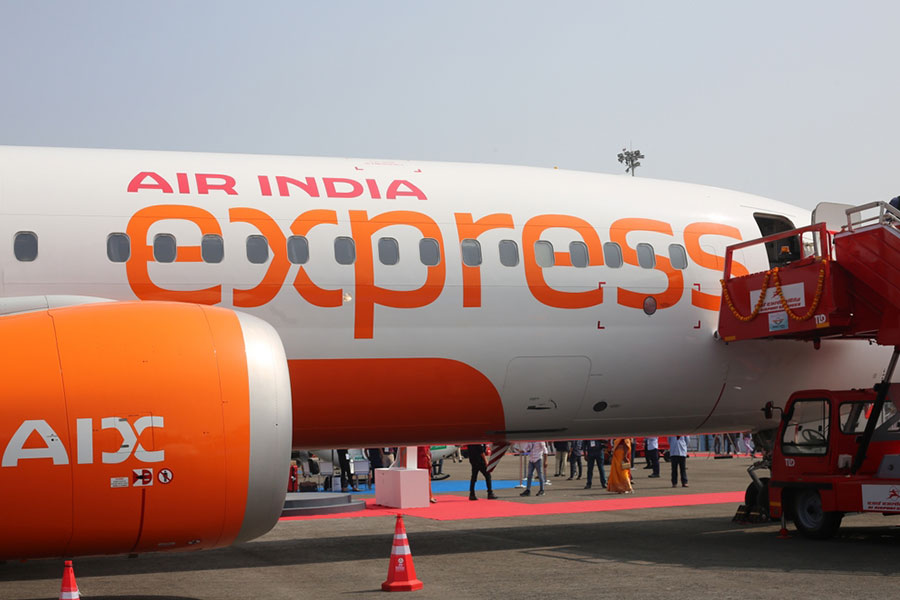



Almost four years into the term of the Narendra Modi government, its foreign policy in South Asia is under the spotlight. Since the government began with an avowed policy of "Neighbourhood First", this focus on the current state of play is understandable. Foreign policy, after all, will be judged not by intentions but by outcomes. Several observers have pointed to the deteriorating ties with many of our neighbours and argue that India's standing in the region has declined - especially relative to that of China. Others have confuted these claims, insisting that the current trends are a manifestation of deeper forces such as democratisation and rise of identity politics in the region. New Delhi, they argue, can hardly be blamed for the way these play out.
While both sides in this debate make important points, it is essential to disentangle at least three sets of issues that tend to be mixed up. How can we decide whether India's regional standing has actually dipped over the past four years? To what extent has China contributed to this perceived decline? And how should India refashion its regional policy?
Start with the question of whether and why India's position in the region has eroded in the recent past. Here we need to distinguish between longer-term trends and determinants, and shorter-term developments. Amongst the former, we can identify at least four long-standing factors that shape India's engagement with its immediate neighbours.

The first is the structural asymmetry of South Asia. India is by far the largest, most populous and most powerful country in the region. It shares a boundary with every country in the subcontinent, but most of them do not share a border with another. Given its potential to be the 800-pound gorilla in the room, it is not surprising that most of India's neighbours regard it with wariness and resentment, if not suspicion and fear.
The second is that the identity of many states in the region is defined in sharp contradistinction to others. We tend to think of this usually in the context Pakistan, but in many ways it predates Partition and Independence. The first Partition of the subcontinent occurred in 1937, when Burma was split from British India. A key driver here was the emergence of Burmese nationalism with a strong anti-India tenor. Similarly, despite the association of Ceylonese and Nepali nationalist parties with that of India, there was always an edge to these relationships. More recently, we can see how the jostling of identities within Bangladesh invariably brings India into the picture.
The third factor is ethnic overlap across state boundaries. This, too, dates well before the region's postcolonial moment in the late 1940s: think of Tamil plantation workers in Sri Lanka, Gorkhas in Sikkim, migrants in eastern India from Bangladesh or Rohingyas in Myanmar. Despite the carving out of national boundaries and subsequent waves of movement and displacement, overlapping ethnicity, especially in borderlands, remains the norm in most states of the region. The upshot of it has been a blurring of domestic problems and foreign policy, and an accentuation of the problem of identity.
Lastly, South Asia has long been a site of uneven development and democratisation. States of the region have never converged on the norms of democracy: in particular, those against majoritarianism and violence. The interaction of these four long-term features has always complicated India's engagement with its neighbours - not least because India tends to become (in perception or reality) a factor in their internal politics.
However, these factors cannot by themselves account for the evident deterioration in our ties with countries such as Nepal or Maldives, nor for the turn that might be taken by Sri Lanka, Bangladesh or Myanmar should the current governments in those countries begin to dodder. No driver can excuse a car accident by pointing to the industrial revolution. To understand the fluctuation in these relations over the past few years, we need to focus on short-term developments.
To be sure, domestic politics among our neighbours are seldom driven, let alone determined, by India. Politics everywhere is local and outcomes are contingent. Yet because India is often in the mix with internal issues, political leaders might be tempted to adopt an antagonistic external stance for domestic pay-offs. Shrewd politicians such as Zulfikar Ali Bhutto and Junius Jayawardene played this well in the past - as more recently have K.P. Sharma Oli of Nepal, Abdulla Yameen of Maldives or Mahinda Rajapaksa of Sri Lanka.
That said, New Delhi's policies over the last few years have undoubtedly contributed to the fraying of its ties in the neighbourhood and have increased the pay-offs for politicians who can claim to be "standing up" to India. Although the Modi government got off to a good start by inviting regional leaders for the swearing-in and by well-publicised visits of the Prime Minister, it soon became clear that the government was inclined to adopt a ham-fisted approach when things didn't go according to its script.
The blockade of Nepal in 2015, the cancellation of the Prime Minister's trip to the Maldives in 2016, public warnings to President Yameen by New Delhi in the current crisis - all failed to yield the desired outcome. More importantly, they underlined the government's propensity to make sharp choices against political leaders and outfits that it regarded as uncongenial: think of Rajapaksa, Oli or even Khaleda Zia of Bangladesh. It is hardly surprising that those at the receiving end of such treatment should strike an anti-India posture. The reputational effects of India's "tough" approach have further accentuated this trend. Recall the boastful references by our ministers to "56 inches" when the Indian Army undertook an operation inside Myanmar with the consent and co-operation of that government. Or the manner in which the government went to town with the "surgical strikes" against Pakistan. None of this has been reassuring to our smaller neighbours. In short, New Delhi's recent policies have spurred the rise of an antagonistic politics in the neighbourhood.
What about the China factor? Attempts to pull in external powers in order to offset India's preponderance have always been a feature of regional politics. Starting with Pakistan's alliance with the United States in 1954, several South Asian countries have made attempts at soft balancing against India or simply expanding their range of options. Bangladesh, for instance, has long looked to China for military equipment while Sri Lanka has turned to both Pakistan and China.
Nevertheless, it is an exaggeration to suggest that China's military presence in the region has grown at India's expense. While the Chinese have acquired control over ports in India's maritime periphery, it is not clear that these have significant military implications - not least because any Chinese military assets in these places remain vulnerable to India's existing strike capabilities. Furthermore, the security arrangements that India has with some key neighbours give it an upper hand in the region relative to China. None of this should be cause for complacence, but at the moment India's ability to project its military power in the region considerably outstrips that of China.
The real problem is China's deepening economic engagement in our neighbourhood. Bilateral trade between China and most of our neighbours comfortably exceeds our own trade with them. While we may take some comfort from the fact that India absorbs more of the exports of these nations than does China, the key point is China's ability to smooth over balance of trade situation with them by means of capital flows as investments.
More recently, we have seen China adopt a proactive stance in shaping the politics of Sri Lanka, Nepal and the Maldives. While it is to be seen if they will be any more successful than India in such attempts, Chinese activism gives politicians in our neighbourhood more options against an overbearing India.
How, then, should India deal with this slump in ties? The strategic choice is between focusing on bilateral ties with countries that are seen as congenial and crafting a regional approach. The former has been the preferred mode over the past couple of years. But against the backdrop of more recent developments, especially the growing economic footprint of China, it is likely to yield diminishing returns. The government now needs to come up with a clear strategy of regional connectivity and integration backed by resources, if necessary from other partners.
South Asia has three attributes that make it extremely well-suited for such a strategy: the highest population density in the world, linguistic and ethnic overlap across borders, and the presence of a large number of cities close to the borders. But this cannot be an economic or technocratic exercise. New Delhi needs to get the politics right. For starters, the "my way or the highway" attitude prevalent over the past couple of years needs to be jettisoned. Only then can India navigate the short-term problems as well as longer-term constraints that have complicated the exercise of its leadership in the region.
Raghavan, a Senior Fellow at New Delhi's Centre for Policy Research, is author of acclaimed volumes on contemporary history including War and Peace in Modern India: A Strategic History of the Nehru Years and 1971: A Global History of the Creation of Bangladesh











